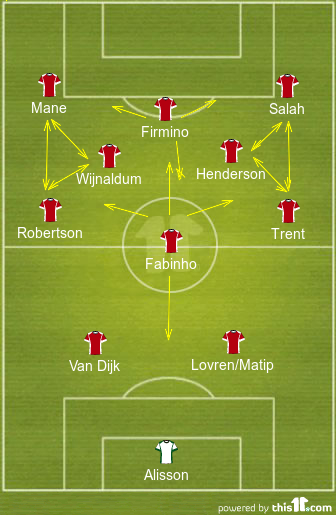A nine-point lead in November over Manchester City has put Liverpool in the driver’s seat to conquer their first league championship in over 30 years. However, the supporters have witnessed enough heartbreak in the recent past and must not get carried away even after the Reds’ majestic 3-1 win at Anfield against the reigning champions.
The handball controversy might lead to more debate and discussions during the tedious international break, but the successful implementation of Jurgen Klopp’s principles, philosophy and the evolution of his strategic masterclass deserve more attention over a mere 50-50 call.
A quiet transfer window and poor pre-season in the aftermath of an inexplicable Champions League triumph raised a few eyebrows in summer. Many of the critics/pundits questioned the credibility and ambition of this prestigious football club. But the charisma of Klopp took little time in putting that criticism to bed and the ‘fight till the last gasp’ attitude is motivating the Redmen to turn things around even in the closing seconds of an arduous outing.
The heart and soul have been there ever since the German stepped in the autumn of 2015, but his own progression as a manager is benefitting the Reds to go that extra mile. His tactical transformation has been observed more frequently of late, and the game against the Citizens epitomised the same when the hosts humiliated Pep Guardiola’s men.
From a strategic point of view, Klopp’s initial years in Merseyside were quite similar to what he used to put into practice at Borussia Dortmund. There he had Shinji Kagawa who used to operate in the advanced areas, and the same was demanded from Philippe Coutinho who had his best years donning the famous red shirt. Also, Ilkay Gundogan used to orchestrate the game from a central role with his vision and box-to-box movements, and the resemblance was found in the utilisation of Joe Allen and later Georginio Wijnaldum to some extent.

Wijnaldum gradually proved himself as a holding midfield option and has been put to use to win the second ball in the middle of the park. His physicality and off the ball work-rate helped the Reds dominate the game centrally, and the gaffer opted for highly-rated Naby Keita after prolonged negotiation with RB Leipzig. The Guinean was brought in to feature box-to-box, carry the ball forward from the deep and find his teammates high up the pitch via defence-splitting through balls. Despite glimpses of his excellence, Keita has been a misfit so far and the time is ticking for the 24-year-old having failed to cement his place in spite of costing more than £50m a couple of summers back.
Klopp, however, did not look back and wait for Keita to perform. Instead, he tweaked his gameplan and introduced an alternate strategy similar to what he did when Coutinho left for Barcelona midway through the 2017-18 campaign. He emphasised more on the wing-play and involved the fullbacks in the attacking third who are often forming triangles down the wide areas while linking upfront banking on their trademark overlapping runs.
Two triangles are in effect simultaneously – one is formed by Trent Alexander-Arnold, Jordan Henderson and Mohamed Salah down the right. In contrast, the other is being structured by the trio of Andrew Robertson, Georginio Wijnaldum and Sadio Mane on the other flank. They are cutting inside using the width, whipping in crosses frequently and distorting the shape of opponents’ backline to create space in between the centre-half and the full-back on either side.
While the triangle on the right is more menacing going forward, particularly on the counter; the left one is more focused on balancing the game between defence and attack. The synchronisation between these two has been possible due to the presence of Fabinho and Roberto Firmino down the middle who work their socks off to bridge up the gaps. The exquisite cross-field balls from Trent Alexander-Arnold deserve plaudits, and the position switch between the Englishman and Robertson introduce more intelligence as well as unpredictability in Liverpool’s game.
Fabinho has been a vital cog in the centre of the pitch who not only commands possession but also slots in between Virgil van Dijk and Joel Matip (or Dejan Lovren) to form a temporary ‘back three’ allowing the fullbacks to operate more like wingers. Klopp demands versatility from every individual and puts the stress on playing the ball out from the back. The Brazilian’s defensive attributes often allow Matip and Van Dijk to make marauding runs while the magician down the touchline orchestrates the entire show with his invisible wand.
The flexibility of formation and the urge to redeem the lost glory has turned the Reds from doubters to believers. But the revolution is on in Merseyside where the people are now dreaming of being the achievers of English football.


 ADD AS PREFERRED SOURCE ON GOOGLE
ADD AS PREFERRED SOURCE ON GOOGLE


